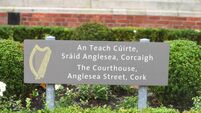Say goodbye to anchored putter as ban takes force

Any players still using the ‘belly’ putter will have to make another plan from now on. Long putters may still be used, but they can no longer be pressed into a golfer’s midsection for greater control.
The ban was first proposed jointly by the Royal & Ancient Golf Club and US Golf Association more than three years ago following much deliberation.
It was swiftly approved and has now been written into the Rules of Golf.
Rule 14-1b states: “In making a stroke, the player must not anchor the club, either ‘directly’ or by use of an ‘anchor point.’”
During the time the anchored putters were allowed, several players enjoyed considerable success. Adam Scott, Ernie Els and Keegan Bradley all won majors while using the elongated flat stick, Bradley the 2011 PGA Championship, Webb Simpson the following year’s US Open and Ernie Els the 2012 Open).
Before his victory, Els famously maintained, “As long as it’s legal, I’ll keep cheating like the rest of ‘em.”
Even Phil Mickelson briefly tried out the new approach, though Tiger Woods remained opposed to the method throughout.
“Anchoring should not be a part of the game,” he said back in 2013 before the ban was approved. “It should be mandatory to have to swing all 14 clubs.”
Panned by critics as a cure-all for golfers with the yips and other issues with traditional putting, it served as the perfect elixir for countless amateurs around the world and, more notably, dozens of top-level professionals. Anchoring was used as the predominant putting style for the winners of many tournaments.
When Paul Azinger claimed a victory in 2000, he insisted of the method, “I was instantly better.” When Steve Flesch won while anchoring three years later, he concluded, “This is like cheating.”
In the wake of that initial proposal to ban anchoring, USGA executive director Mike Davis explained, “More players are using it, and instructors are saying this is a more efficient way to putt because you don’t have to control the whole stroke. The game has been around for 600 years. Fundamentally, we don’t think this is the right way to go.”
Because any violation of Rule 14-1b carries a two-stroke penalty in stroke play and loss of hole penalty in match play, don’t expect any posthumous appearances from the anchored stroke.












